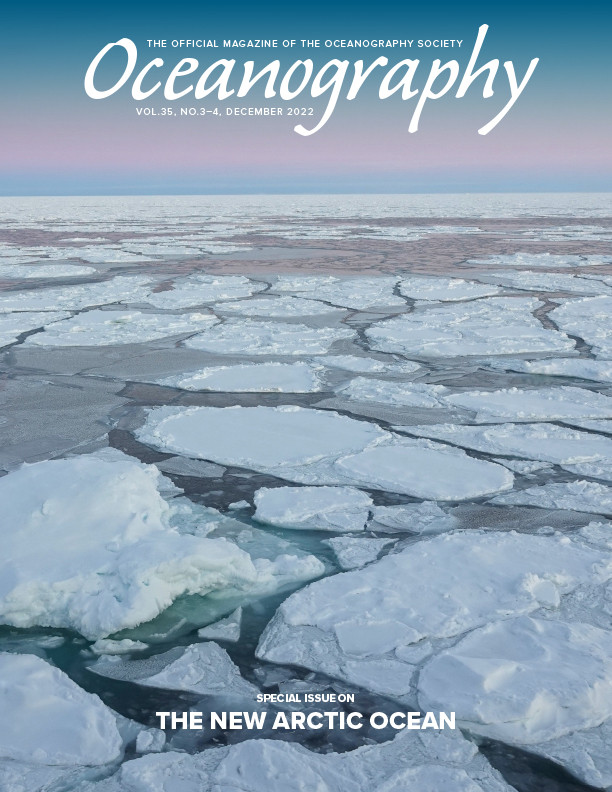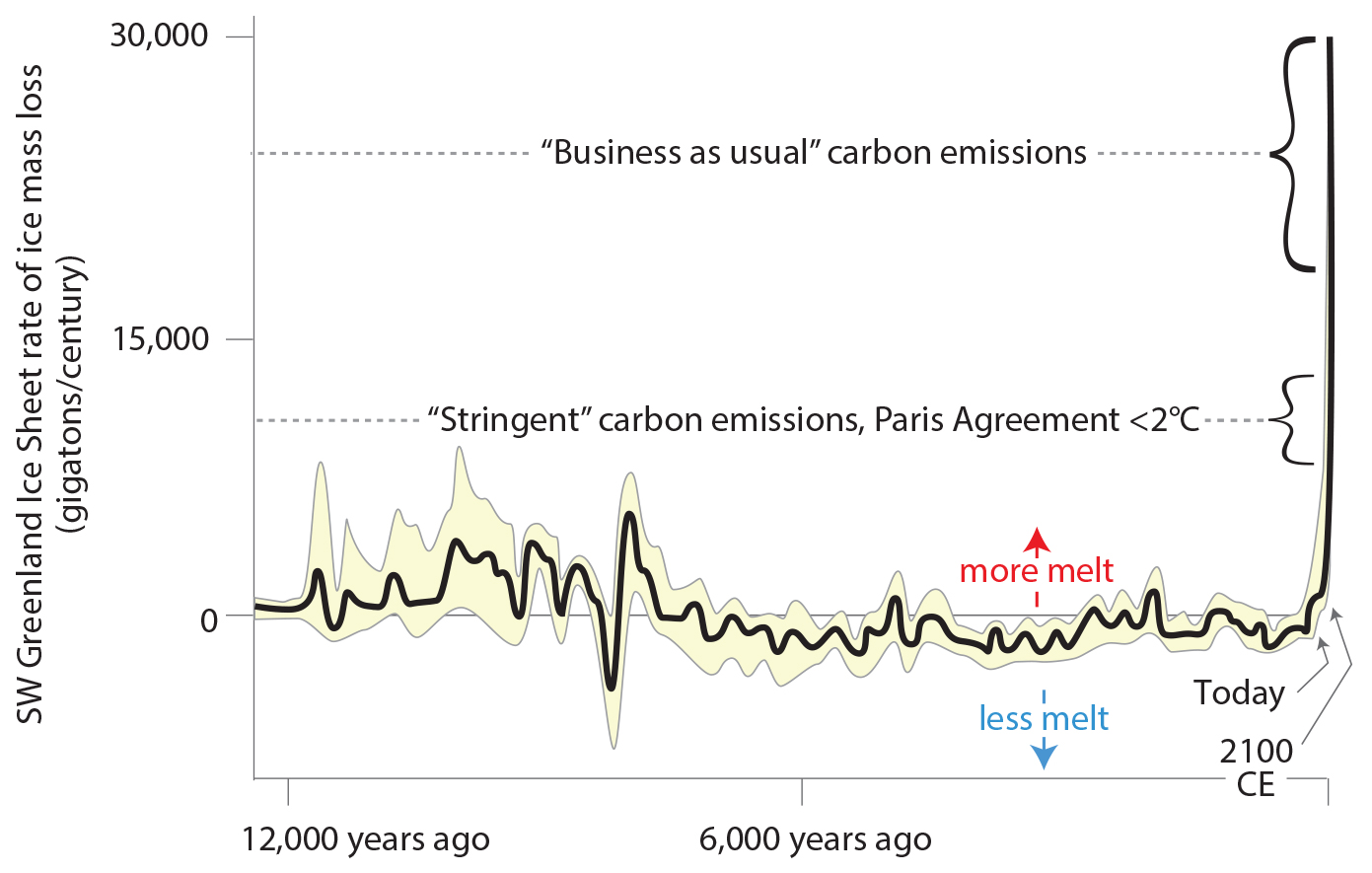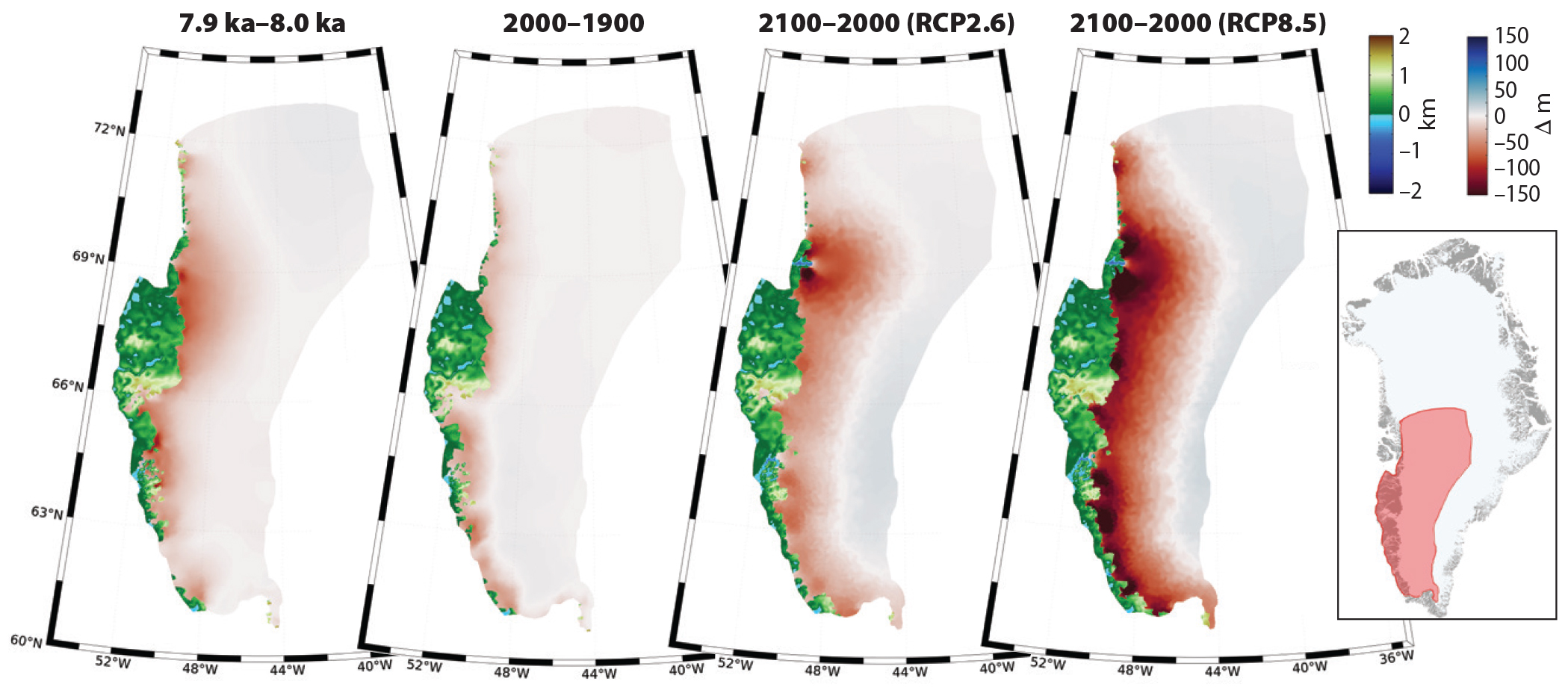Full Text
The Greenland Ice Sheet is melting at a devastating rate. Recent scientific reports like the Intergovernmental Panel on Climate Change Sixth Assessment Report (Fox-Kemper et al., 2021) highlight how vulnerable the Greenland Ice Sheet is to Arctic climate change, and they draw a dire picture of the impact of sea level rise around the globe.
In order to equip society with the best forecasts of sea level rise, scientists are constantly improving their ability to simulate—or model—ice sheet responses to climate change. Because ice sheet model simulations are simply numerical representations of future ice sheet change, a major emphasis of current research is reducing uncertainties in these predictions. Areas with large uncertainties include how atmospheric and oceanic forcing varies through time and the timescales (e.g., years, decades, centuries) at which each forcing can cause ice sheet change. Scientists have been observing ice sheet change for only a short period (decades), and knowledge of ice sheet responses to atmosphere and ocean changes that span longer time periods would greatly assist in reducing uncertainties.
One approach to improving knowledge of present and future ice sheet change is to study ice sheet changes from the geologic past. Briner et al. (2020) aimed to place contemporary and future elevated rates of Greenland ice loss in the context of Holocene—the past 12,000 years. The Holocene experienced a warmer-than-present time period that provides a partial analog for ongoing warming. The team concluded that Greenland Ice Sheet mass loss in this century will almost certainly be higher than in any century over the past 12,000 years (Figure 1).
|
|
The research team used a high-resolution ice sheet model driven by climate history generated from ice core data. The results were validated against geologic reconstructions (e.g., well-dated moraines) of past ice margin change. Because the ice sheet model was computationally intensive and the simulations were most robust where they could be validated with moraines (which mostly exist in southwestern Greenland), the study domain was limited to southwestern Greenland. Surface melting dominates Greenland ice mass change in southwestern Greenland, as opposed to dynamic discharge associated with marine glacier termini. Surface melt is simpler to model than dynamic discharge, so the simpler physics in the model for this region led to more trustworthy results.
These results showed that the largest pre-industrial rates of ice mass loss (up to 6,000 gigatons/century) occurred in the early Holocene and were similar to the contemporary (CE2000–2018) rate of around 6,100 gigatons/century. Simulations of future mass loss from southwestern Greenland using the same model, based on Representative Concentration Pathway (RCP) scenarios corresponding to low (RCP2.6) and high (RCP8.5) greenhouse gas concentration trajectories, predict mass loss of between 8,800 and 35,900 gigatons over the twenty-first century. Comparison of the Briner et al. (2020) results with a recent Greenland Ice Sheet model intercomparison effort to assess twenty-first century ice mass loss (Goelzer et al., 2020) shows that the simulations are within, but at the lower end, of the model spread. These twenty-first century rates of ice mass loss exceed the highest rates over the past 12,000 years (Figure 2). Because rates of ice mass loss from the southwestern Greenland Ice Sheet scale linearly with the ice sheet as a whole, the results suggest that the rate of mass loss from the Greenland Ice Sheet this century will exceed the highest Holocene mass loss rates by a factor of about four. The amount of ice loss in southwestern Greenland this century would reverse the previous 4,000 years of cumulative ice growth.
|
|
The next steps of this research will allow simulation of the entire ice sheet at very high resolution, an endeavor that is becoming more and more computationally feasible. Improvements in simulating the complicated dynamics at the ice-ocean interface, where some of the most unstable parts of the ice sheet are located, are now ready to be included in new numerical simulations. These next stages will result in more robust estimates of the rate of ice mass change for both the past and the future Greenland Ice Sheet.



